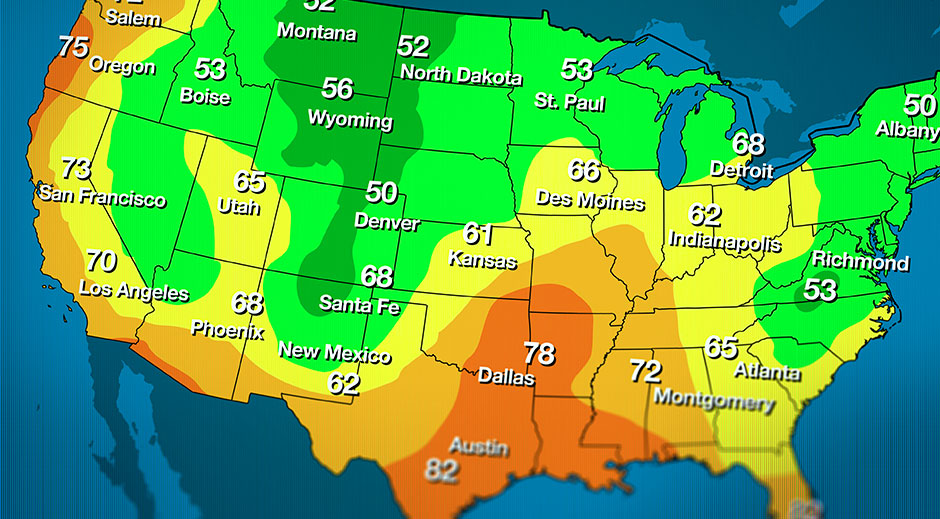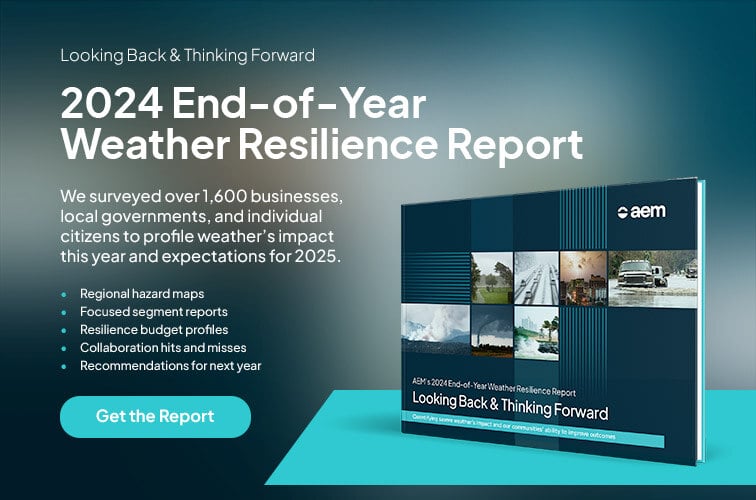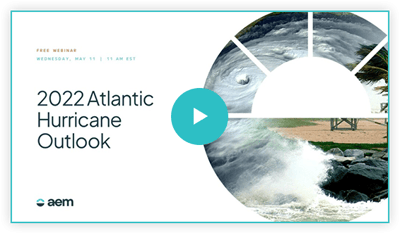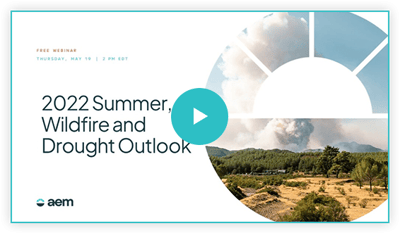
People around the world rely on weather forecasts to help make the best of good weather and stay safe during bad weather. In this way, meteorologists play a key role in our daily lives, even if we’re not always aware of their work. By increasing our awareness of what meteorologists actually do and how forecasts are created, we can get more out of the information they provide.
Moving forward, we’ll explore…
- How meteorologists leverage tools and their expertise to build a forecast
- Why many of the most accessible weather forecasts are inaccurate or unreliable
- How people can collaborate directly with meteorologists to get high-accuracy forecasts
How is a weather forecast created?
To create a reasonable prediction of weather on any given day in any given area, meteorologists have two main tools at their disposal:
- Live weather data
- Historic weather data
In order to make a forecast, they must understand the current conditions in terms of temperature, wind speed, humidity, pressure, and beyond. They also need to understand how similar systems have moved through the area they’re focusing on in the past, particularly around the given time of year.
In short, by combining what they know know about the weather right now and the patterns and behavior of weather systems in the past, meteorologists can create a model of what they’re pretty sure will happen.
Sounds easy, right? It’s actually quite a complex process that relies on a combination of high-tech equipment and scientific interpretation.
Local weather monitoring
Weather stations are the backbone of all meteorology and forecasting. While meteorologists toil at the computer building forecasts, weather stations are out in the field capturing the information weather scientists need to feed into their calculations.
Currently, meteorologists get their data through a blend of government and privately owned weather stations. As weather-related challenges continue to grow over the next few decades, adding more stations around the U.S. and world will be a top priority to ensure the flow of high-quality data continues.
The role of weather radar in forecasting
Doppler radar helps meteorologists visualize cloud movement and precipitation forming. That means, along with weather station data, radar helps weather scientists get the current data they need to understand how weather is developing and where it’s headed.
How historic weather data impacts forecasts
There’s an old expression that you “can’t know where you’re going unless you know where you’ve been.” That adage holds true in the world of weather, where the best forecasts are built on the greatest possible foundation of data.
The word “historic” is a little misleading because it might sound like we’re talking about wisdom that’s been handed down for thousands of years. While it’s true our distant ancestors were very interested in documenting and predicting the weather, the historic data meteorologists are most concerned with comes from the last century, particularly the last few decades.
That recent historical data is meteorologists’ best bet to understand and predict how current weather systems will behave, since it’s the most apples-to-apples data in terms of measurement accuracy and climatological conditions.
Using supercomputers to maximize modeling
Computer modeling has provided the biggest forecasting breakthrough for meteorologists in the last fifty years.
Previously, forecasts were limited by how many data points a scientist could figure into their own calculations. That meant that time and human work capacity made it almost impossible to have the best possible forecast. Meteorologists were always settling for “good enough, given time constraints.”
Computers can process a near-infinite amount of historical data and carry out calculations much faster than one meteorologist (or an entire team of meteorologists). This means modern forecasts with computer modeling are backed by a greater foundation of data than weather predictions at any prior point in human history.
Scientific expertise and human analysis
While computers have drastically changed daily life for meteorologists, the human weather scientist still has an incredibly important role in forecasting. Computer-generated forecasts must be double-checked and validated for accuracy and usefulness.
The meteorologist also needs to be able to translate that forecast data into a presentation that’s digestible and actionable for their audience. In this way, they put a human face on what is essentially a massive cloud of data.
"Why is the weather forecast always wrong?!"
For as long as people have been forecasting the weather, others have been frustrated by the apparent inaccuracy or inconsistency of those forecasts.
The first problem is the age of the dataset meteorologists can draw from. Sure, historical weather data has been documented increasingly well over the last few centuries, but what meteorologists really need in order to do a better job is more current data.
Given the incredible challenge of gathering, processing, and interpreting real-time data from around the country and globe, forecasts rely heavily on historical modeling. In our current environment, where climate and weather patterns are shifting away from historical norms, this makes it a tough job to generate an ultra-accurate forecast.
Hyperlocal vs. regional weather data
Another key issue is that most public forecasts generated by newspapers and local TV stations are looking to create a generalized forecast for a large geographic service area. That means they could be pulling data from one centrally located weather station and applying that information to represent conditions in the whole region, or the forecast could be averaging the readings from a number of stations throughout the service area to create a generalized forecast.
In both of those scenarios, the most specific local data gets ignored or lost in the shuffle. That means that forecast could be accurate in one town but not the next – or nowhere.
To increase the quality of local forecasts, meteorologists need more weather stations to draw live information from and build a historical record around to support future modeling.
The value of true weather scientists
Not all forecasters are created equal. Some meteorologists rely exclusively on the information that modeling computers spit out and simply present the forecast. Others do their own work, compare it against the computer model, and allow both to inform the final product.
Getting a great forecast requires working with a great meteorologist who has a high-level knowledge of weather science, a strong understanding of modeling, and a commitment to getting things right to keep people safe.
Why private forecasting services are growing
Since free local forecasts can’t always be relied upon for accuracy, especially in real time, more and more organizations are beginning to leverage private forecasting services. These teams of dedicated experts can focus in on a very specific geographic area and enable their customers with weather stations that provide the data they need to provide a quality forecast.
Some of the businesses increasingly leveraging private weather forecasts include:
- School districts (for weather call-offs, sports games/practices, outdoor events, etc.)
- Utility companies (to protect infrastructure during major weather events)
- Pro sports teams and private sports clubs (to ensure safety and support scheduling decisions)
- Airports and airlines (to optimize situational decision-making)
- Mining companies (to ensure employee safety and optimize operations)
How to learn more about meteorological services
If you’re interested in getting high-accuracy local forecasts to support your team, AEM is here to help. Our Earth Networks Meteorological Services team has been providing custom forecasts to aid in operational decision-making and severe weather management for more than fifteen years.
Our team of weather experts is on call 24/7/365 so that customers can get the help they need interpreting forecasts, preparing for major weather events, or just building their own understanding of weather patterns in their area. Each customer also has a custom dashboard they can access to view relevant real-time data as well as recent historic conditions and hyperlocal forecasts.
To get the conversation started about private meteorological services, contact us today!




